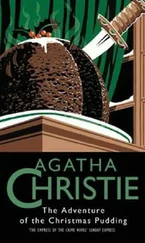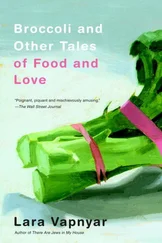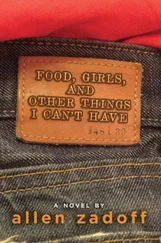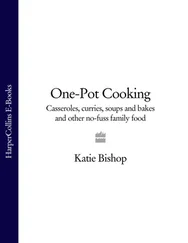
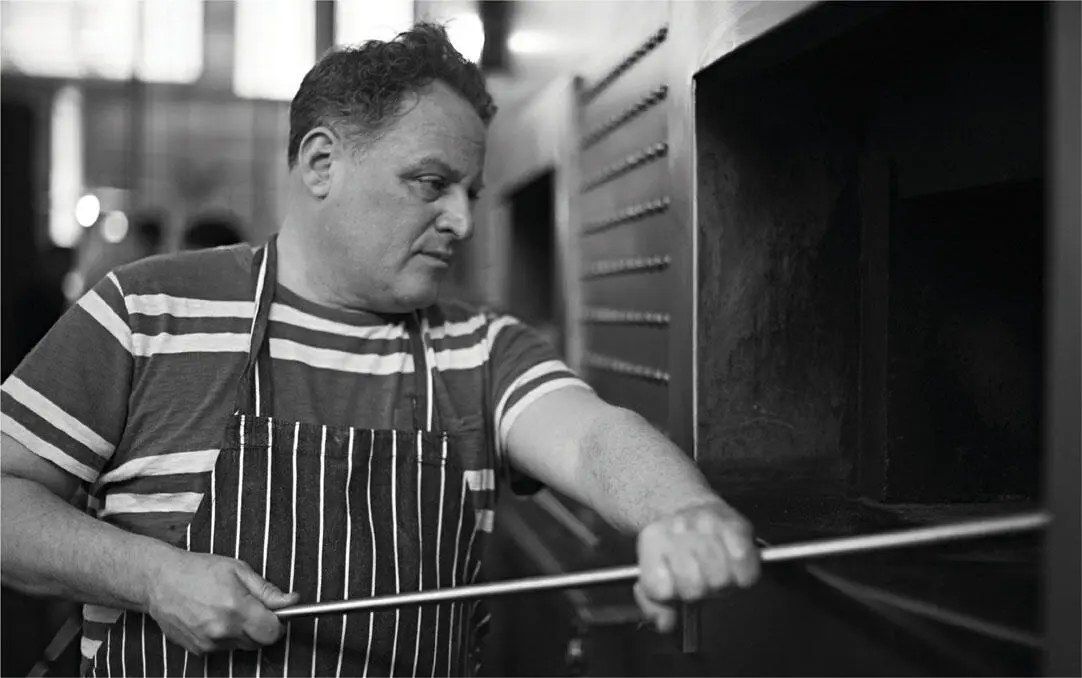
LOVE & MASTERS
Understanding and appropriating these two words has been a ghost in my machine for as long as I can remember. Take the word “master”: as far as I’m concerned we could do ourselves much good by just removing it from our vocabulary. The terms “pizza master,” “bread master,” or “whatever master” create a submissive or unequal relationship when they’re applied to food and all that makes coming to the table possible. When I am kneading or shaping dough, I rely solely on being present and responding to how much something needs, whether it’s just time or manipulation—I knead you and I need you. If someone asked me what business I was in, I’d say the relationship business—understanding the importance of relationships and my role in them applies to food, people, furniture, you name it. I want us both to be happy.
As for love, that’s a bit broader. I see love only as a four-letter word that does its best to explain what in most cases is unexplainable—we love our dogs, cats, friends, wives, husbands, family, God, and, yes, pizza. It’s taken my whole life thus far to get them in order and serve them appropriately. If I do all my most diligent foraging and preparation but am negligent on oven temperature or vessel or lack of a plate to put the food on, my intention will be at risk. Back in the late ’80s when wood ovens weren’t so popular, some people would watch me work and say, “The wood-fired oven— that’s the secret.” The secret that is no secret is even in the most Ferrari of ovens, shit in will be shit out, yet the most humble oven at the proper temperature with all aspects in balance and restrained harmony, will set you free.
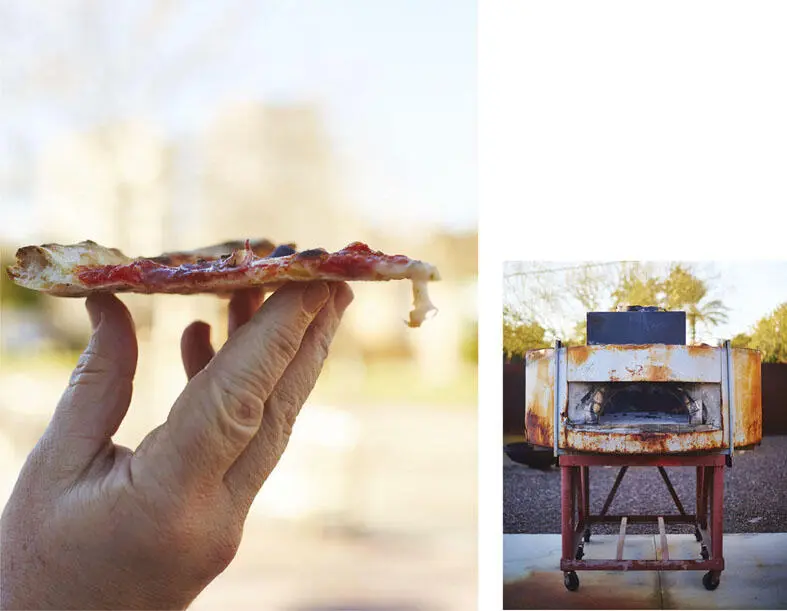
PIZZA DOUGH
This dough contains just four ingredients: water, flour, yeast, and salt. Let’s consider each one in turn. Before you make the dough for the first time, I want you to pour yourself a glass of the water you’ll be using and drink it. I want you to really taste it. It is going to rehydrate the flour, and its warmth will bring the yeast back to life. Ask yourself how salty it is, how sweet it is. Record your observations.
Next, think about the flour. What kind are you going to use? I like one that is high in protein (13 to 14 pcl, organic, and grown and freshly milled as close to home as possible), because it gives the finished crust a good chew. If you’re lucky enough to have a mill near where you live, pay a visit and ask about its flour and grain varietal. The flour is the biggest single factor in the flavor of your dough, so it’s something that you don’t want to compromise on.
Now the yeast. Yeast is life. Yeast is what makes bread different from everything else we eat. Here, for ease, I use active dry yeast. As you experiment, you may want to try fresh yeast, but active dry yeast will give you a good and consistent result.
And last, salt. Salt is flavor. It’s rare to see someone muck up a bread with too much salt. If anything, I find a lot of bread is insipid because it lacks salt. Pick a fine, not coarse, salt you like, preferably sea salt that has been minimally processed.
Makes enough for four 10-inch pizzas
1 envelope (2¼ teaspoons; 9 grams) active dry yeast
1 cups warm water (105° to 110°F)
5 to 5½ cups bread or other high-protein flour, preferably organic and freshly milled, plus more for dusting
2 teaspoons (12 grams) fine sea salt
Extra virgin olive oil, for greasing the bowl
Combine the yeast and warm water in a large bowl. Give the yeast a stir to help dissolve it, and let it do its thing for 5 minutes. You’re giving it a little bit of a kick-start, giving it some room to activate, to breathe.
When the yeast has dissolved, stir in 3 cups of the flour, mixing gently until smooth. You’re letting the flour marry the yeast. Slowly add 2 cups more flour, working it in gently. You should be able to smell the yeast working—that happy yeasty smell. Add the salt. (If you add the salt earlier, it could inhibit the yeast’s growth.) If necessary, add up to ½ cup more flour 1 tablespoon at a time, stirring until the dough comes away from the bowl but is still sticky.
Turn the dough out onto a floured work surface and get to work. Slap the dough onto the counter, pulling it toward you with one hand while pushing it away with the other, stretching it and folding it back on itself. Repeat the process until the dough is noticeably easier to handle, 10 to 15 times, then knead until it’s smooth and stretchy, soft, and still a little tacky. This should take about 10 minutes, but here, feel is everything. (One of the most invaluable tools I have in my kitchen is a plastic dough scraper. It costs next to nothing, and it allows me to make sure that no piece of dough is left behind.)
Shape the dough into a ball and put it in a lightly greased big bowl. Roll the dough around to coat it with oil, then cover the bowl with plastic wrap and let the dough rest in a warm place until it doubles in size, 3 to 5 hours. When you press the fully proofed dough with your finger, the indentation should remain.
Turn the proofed dough out onto a floured work surface and cut it into 4 pieces. Roll the pieces into balls and dust them with flour. Cover with plastic wrap and let them rest for another hour, or until they have doubled in size.
The dough is ready to be shaped, topped, and baked. If you don’t want to make 4 pizzas at a time, the dough balls can be wrapped well and refrigerated for up 8 hours or frozen for up to 3 weeks; thaw in the refrigerator and let come to room temperature before proceeding.
SHAPING PIZZA DOUGH
Hold the top edge of a piece of dough with both hands, allowing the bottom edge to touch the work surface, and carefully move your hands around the edges to form a circle of dough. You have to find your own style, but I usually just cup my hand into a C shape, turn my hand knuckle side up, and drape the dough off it, allowing gravity to do its work, so it gently falls onto the floured table. Imagine you’re turning a wheel. Hold that dough aloft, allowing its weight to stretch it into a rough 10-inch circle. Don’t put any pressure on it by pulling or stretching it, just let gravity do the job—you want that aeration and cragginess. Keep it moving, and it will start to relax—like we relax when we are on a sofa.
At this point, you’re ready to make a pizza. Lay the dough on a lightly floured pizza peel or inverted baking sheet. Gently press out the edges with your fingers. You will start to see some puffiness or bubbles now. Jerk the peel to make sure the dough is not sticking. If it is, lift the dough and dust the underside with a little flour (or, if no one is looking, blow under it very gently). Tuck and shape it until it’s a happy circle.
Top the pizza as per the instructions in any of the recipes that follow.
PROOFING DOUGH
In our Pizza Dough recipe, you proof the dough for up to 2½ hours, then divide it into balls and let it proof for another hour before you bake it. It tastes good. No problems. But what happens if you proof it for 7 hours? What if you let it go for 24 hours? Or 36? Or 48? It will be different, and that difference might be more to your taste than the basic dough. At 3 to 5 hours for the first proof, you will have a dough that will brown more quickly than a dough that’s proofed for 14 hours, because the yeast will not have converted as many of the sugars. The longer the dough proofs, and the more sugars are converted, the more it will have that smell of fermentation, and the more the sour flavors will develop. Many people (including me) love those flavors—like in a good sourdough bread—but here I don’t necessarily want too many of them, because I don’t want them to dominate the flavors of the pizza toppings. That said, there is no wrong way to go here. Make the dough a few times, following the recipe, until you feel comfortable. Then start to play with it. Determine how long a proof you like.
Читать дальше




